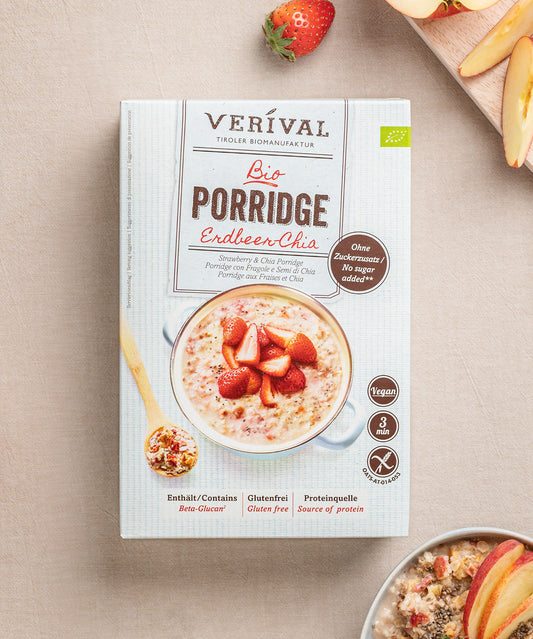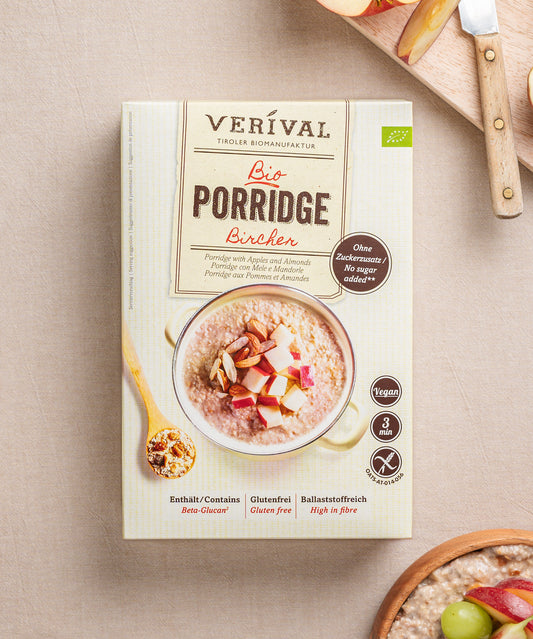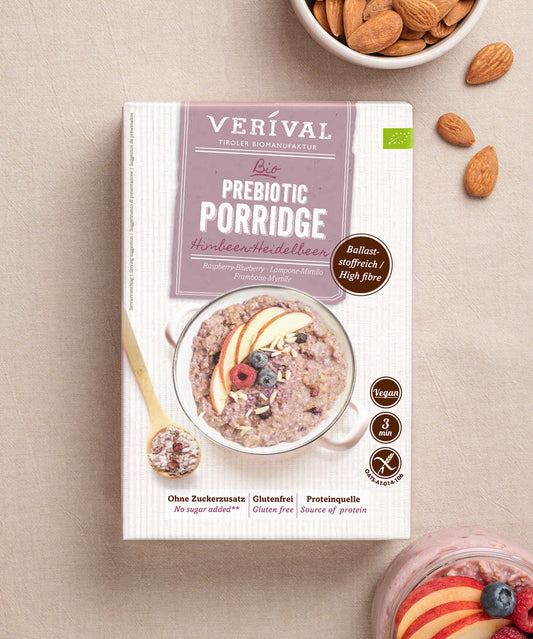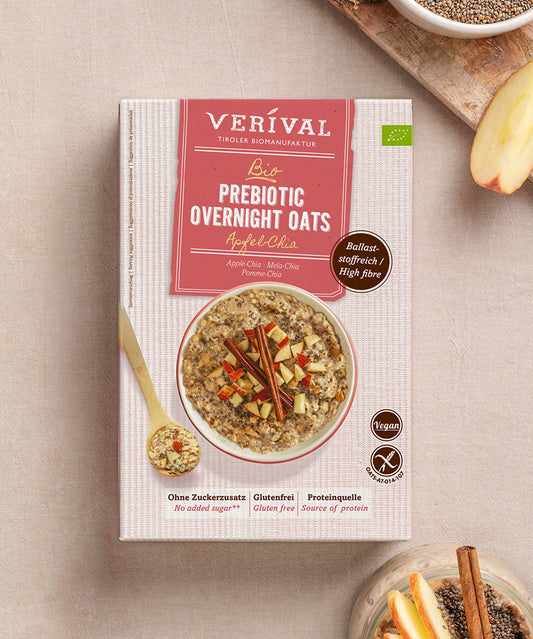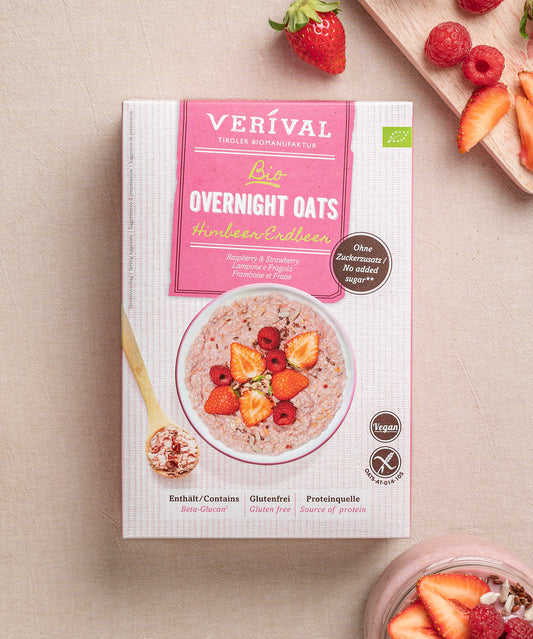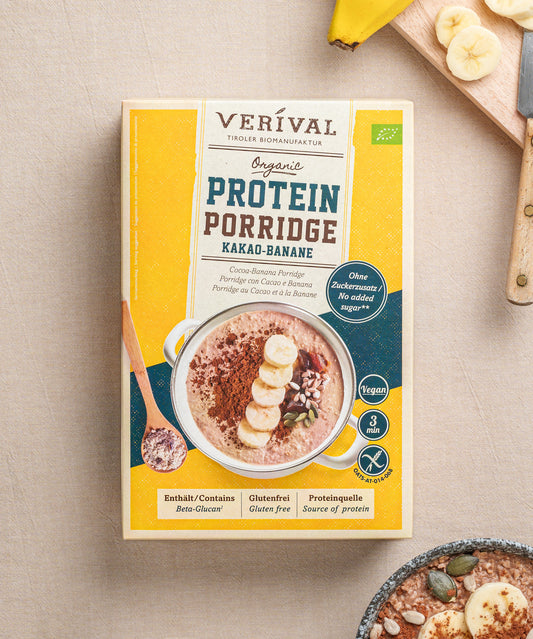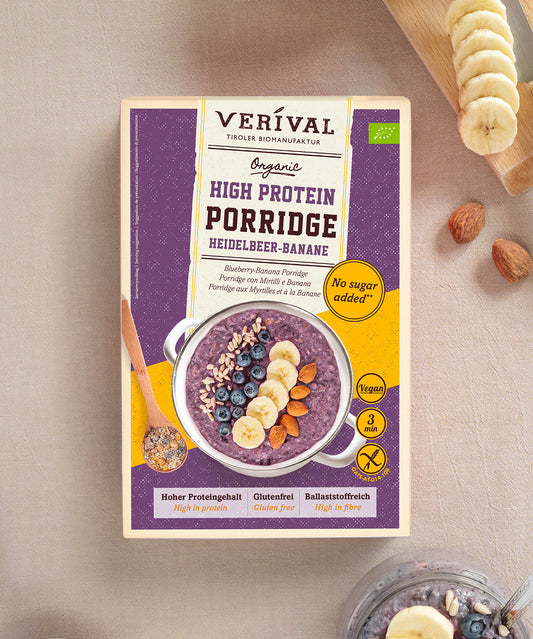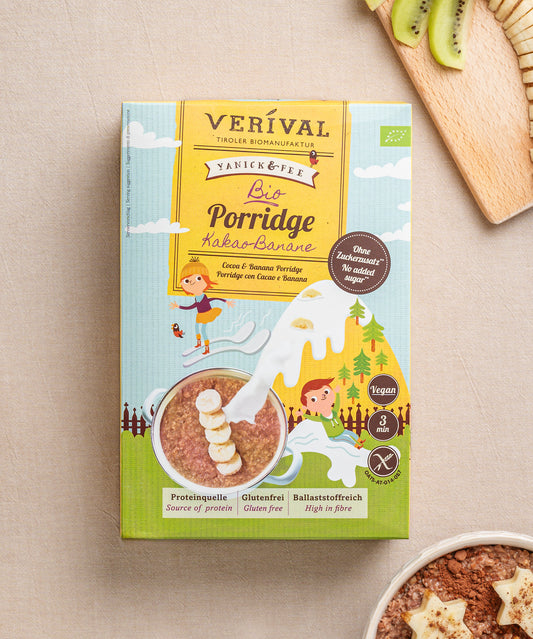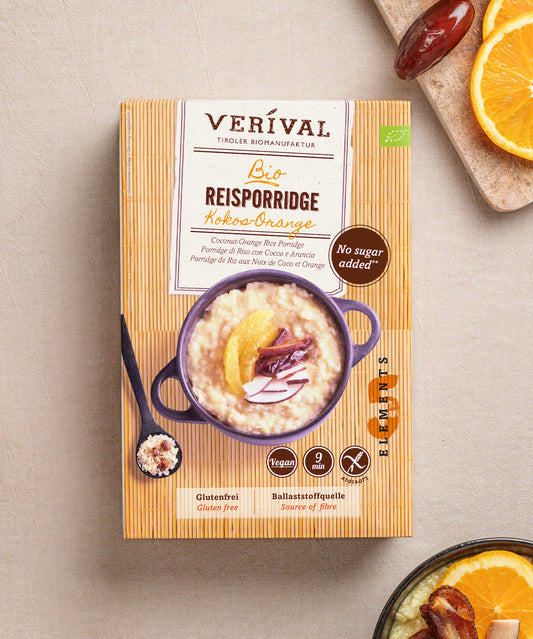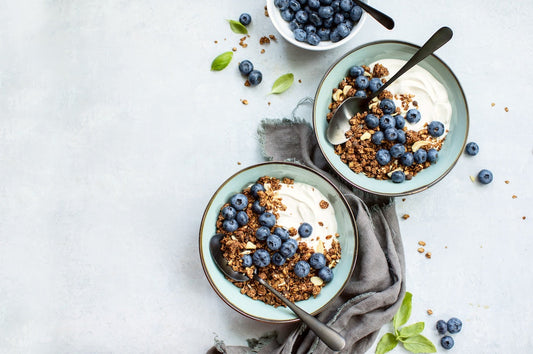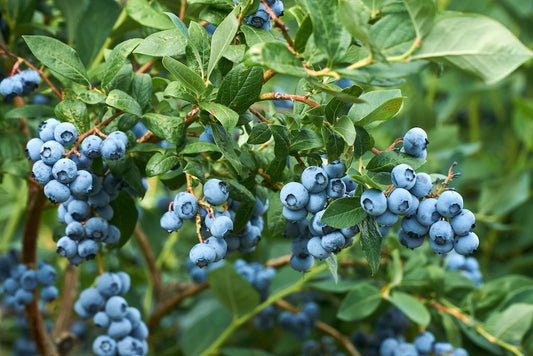Are you one of those people who has had elevated cholesterol at some point? Perhaps you have also considered taking medication to lower it.
We would like to introduce you to a food here – the superfood oat bran, which can be an excellent natural way to help optimize your cholesterol levels. Let's get started!
Everything you need to know about oat bran
How oat bran affects your cholesterol level
Oat bran has an impressive ability. It is able to regulate your cholesterol level. The mechanism by which oat bran positively affects cholesterol levels is well researched.
The soluble dietary fiber, especially the beta-glucan, is the key here. They form a gel-like substance in the gastrointestinal tract. This substance binds bile acids and cholesterol, preventing them from being fully absorbed into the body.
In response, the liver has to absorb more cholesterol from the bloodstream to produce new bile acids. This leads to a drop in LDL cholesterol levels, or “bad” cholesterol, in the blood.
In addition, beta-glucan can increase the release of the satiety hormone peptide YY, which leads to long-lasting satiety and can prevent food cravings. This helps to regulate body weight and reduce the risk of obesity.
The positive effects of oat bran on cholesterol levels have been well documented in numerous scientific studies. Taking oat bran daily is therefore highly recommended.
Oat bran and its components
To obtain oat bran, the outer layers are removed. The inner part of the grain, the endosperm, is ground into flour. The outer layers are particularly rich in valuable components. The oat bran obtained is thus a concentrate of healthy ingredients and can be used in a variety of ways to benefit from its health advantages. Oat bran is healthy.
Micronutrients
Oat bran is rich in micronutrients, including minerals, trace elements and vitamins – such as iron, magnesium and B vitamins. These nutrients are crucial for the smooth running of various metabolic processes in the body. In addition, they contribute to mental well-being and support the proper functioning of the immune system.
Protein
Protein is an essential building block for numerous cell processes in the body. It plays a key role in building and maintaining muscle. With a protein content of about 15.1 grams per 100 grams, oat bran is an excellent source of protein. In addition, eating protein-rich foods ensures long-lasting satiety.
Dietary fiber
Oat bran is characterized by its high fiber content, especially soluble fiber such as beta glucan. 100 grams of oat bran contains an impressive 16.6 grams of fiber. They are essential for digestion and can help prevent constipation. They are responsible for the positive influence on cholesterol and blood sugar levels.
Nutritional information
100 grams of oat bran contain about 331 kilocalories. The bran also contains 8.6 grams of fat and 48.4 grams of carbohydrates, with a sugar content of just 1.3 grams. These nutritional values make oat bran a calorie-conscious choice that impresses with excellent nutrients.
Oat bran is a nutritional goldmine.
What is cholesterol?
Cholesterol is an essential building block for the human body, as it is needed for various functions. It plays a crucial role in the formation of cell membranes and is an indispensable component of cells in all organs and tissues.
In addition, cholesterol serves as a precursor for the production of hormones such as cortisol, testosterone and estrogen, which perform important functions in the body, including the regulation of the circulatory system and sexual development. Cholesterol is also important for digestion, as it is necessary for the formation of bile acids.
Cholesterol is produced by the liver and transported in the blood to the cells where it is needed for various processes. It is transported in the form of lipoproteins because cholesterol itself is insoluble in water. There are two main types of lipoprotein:
LDL cholesterol (low-density lipoprotein)
This lipoprotein transports cholesterol from the liver to the cells in the body. An increased LDL cholesterol level is often referred to as “bad” cholesterol and is associated with an increased risk of cardiovascular disease.
HDL cholesterol (high-density lipoprotein)
HDL cholesterol, on the other hand, transports cholesterol from the tissues back to the liver. A high HDL cholesterol level is considered beneficial and is referred to as “good” cholesterol.
Although cholesterol is essential for the body, an excess of cholesterol or an imbalance between its formation and breakdown in the blood can lead to health issues, particularly cardiovascular disease.
Superfood oat bran – studies and scientific findings
The EU recognized the health benefits of oat beta-glucan as early as a decade ago and approved specific claims about it. Foods containing oat beta-glucan are therefore allowed to make reference to their cholesterol-lowering effect. The recommendations are one gram of oat beta-glucan per serving and a total of three grams of beta-glucan per day. This information can be found on the relevant product packaging.
A study published in Bologna, Italy, in 2020 once again confirmed the cholesterol-lowering effect of oat beta-glucan. 1 Over a period of eight weeks, 83 subjects took in three grams of beta-glucan from oats every day. After just four weeks, an average reduction in LDL cholesterol of 12.2 percent was observed, and after eight weeks the figure was as high as 15.1 percent. Total cholesterol also decreased by 6.5 percent after four weeks and by 8.9 percent after eight weeks.
It is particularly impressive that these results were achieved despite the fact that the Mediterranean diet is already high in fiber. The high fiber content of fruit and vegetables did not limit the effect of the oat beta-glucan. Furthermore, cholesterol levels rose again after the beta-glucan intake was stopped, which underlines the importance of regular oat bran consumption for cholesterol prevention.
Even though the daily beta-glucan intake in this study was via a concentrate that was dissolved in water, the results can certainly be applied to commercially available oat foods. Numerous other studies using classic oat products such as oat flakes and oat bran have come to similar conclusions.
Oat bran – read more about it!
With Verival you can integrate oat bran into your diet
Whether in breakfast porridge, your muesli, a fresh smoothie or even over salad or soup: oat bran should never be missing.
We at Verival want to enable you to enjoy selected products with lots of oat bran.
With the sour cherry cocoa oat porridge, Verival offers a healthy, warm breakfast. 100g of porridge provides you with 32% of your daily fibre requirement, 21% of your required protein and all essential amino acids, important vitamins and minerals. The high proportion of oat bran (77%) means you are doing something good for your cholesterol level first thing in the morning. Of course, any porridge is also suitable as a snack between meals.
Especially in the cooler months of the year, a poppy seed and plum porridge could be just the thing for you. With over 70% oat bran, it is another excellent choice if you want to pamper your body and lower high cholesterol levels.
Conclusion
There is no doubt that oat bran is healthy and a secret superhero in your diet. With its impressive arsenal of beta-glucans, it is at the forefront of the fight against high blood lipids.
Oat bran also reduces the risk of all secondary diseases associated with cholesterol. And by the way, it does all this with so much charm that it even creates culinary delights. So grab your daily portion of this superfood and enjoy the taste of well-being.
- 1.Cicero AFG, Fogacci F, Veronesi M, et al. A Randomized Placebo-Controlled Clinical Trial to Evaluate the Medium-Term Effects of Oat Fibers on Human Health: The Beta-Glucan Effects on Lipid Profile, Glycemia and inTestinal Health (BELT) Study. Nutrients . Published online March 3, 2020:686. doi: 10.3390/nu12030686
Oat bran – read more about it!
Frequently asked questions
Can oat bran lower cholesterol?
Oat bran is a real treasure trove of the dietary fiber beta-glucan. This soluble fiber has the ability to bind bile acids in the intestines that are high in cholesterol. When these bile acids are excreted, the body uses cholesterol from the blood to produce more bile acids. This leads to a reduction in LDL cholesterol, often referred to as “bad” cholesterol. Oat bran can therefore act as a natural cholesterol-lowering agent in a healthy diet. To positively influence blood lipid levels, it generally makes sense to reduce your intake of animal fats and saturated fatty acids and to favor vegetable oils (from olives or walnuts) with plenty of polyunsaturated fatty acids.
What lowers cholesterol better: oats or oat bran?
While both oat flakes and oat bran contain valuable soluble fiber, oat bran is even richer in beta-glucan. This makes it particularly effective in reducing high cholesterol levels. In addition, oat bran has a higher micronutrient content because it comes from the outer layers and the germ of the oat grain.
How much oat bran can you eat per day?
A daily intake of about 3 grams of beta-glucan, which corresponds to about 40 grams of oat bran, can help lower cholesterol levels. Of course, the exact amount of beta-glucan varies depending on the quality and processing of the oat bran. A look at the nutritional information can help here.
Which is healthier, oat flakes or oat bran?
Oat bran has a slightly higher nutritional value than oat flakes due to its high content of soluble fiber, especially beta-glucan, as well as a variety of minerals and trace elements from the oat grain layers.
Is oats good for cholesterol?
Yes, definitely! Oats, whether in the form of flakes or bran, contain the soluble fiber beta-glucan, which has been shown to lower LDL cholesterol levels. Incorporating oat products into your daily diet can thus make a valuable contribution to the prevention of cardiovascular diseases. In addition to lowering cholesterol, oat bran also has the positive effect of improving the intestinal flora.
What is the difference between oat bran and oat bran flakes?
Oat bran is available in the form of semolina and soluble flakes. Oat bran semolina is the coarser parts that remain when the outer layers and seedling of the kernel are coarsely ground and sieved.


